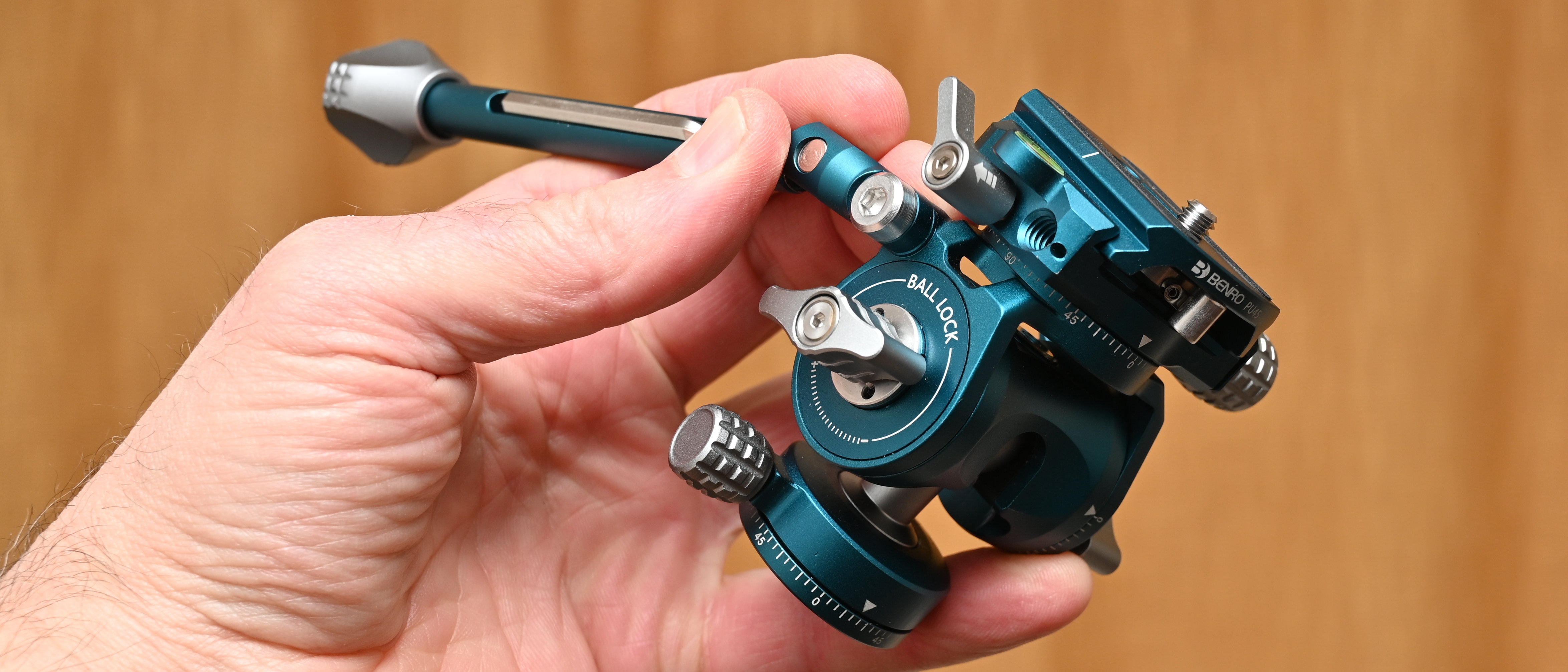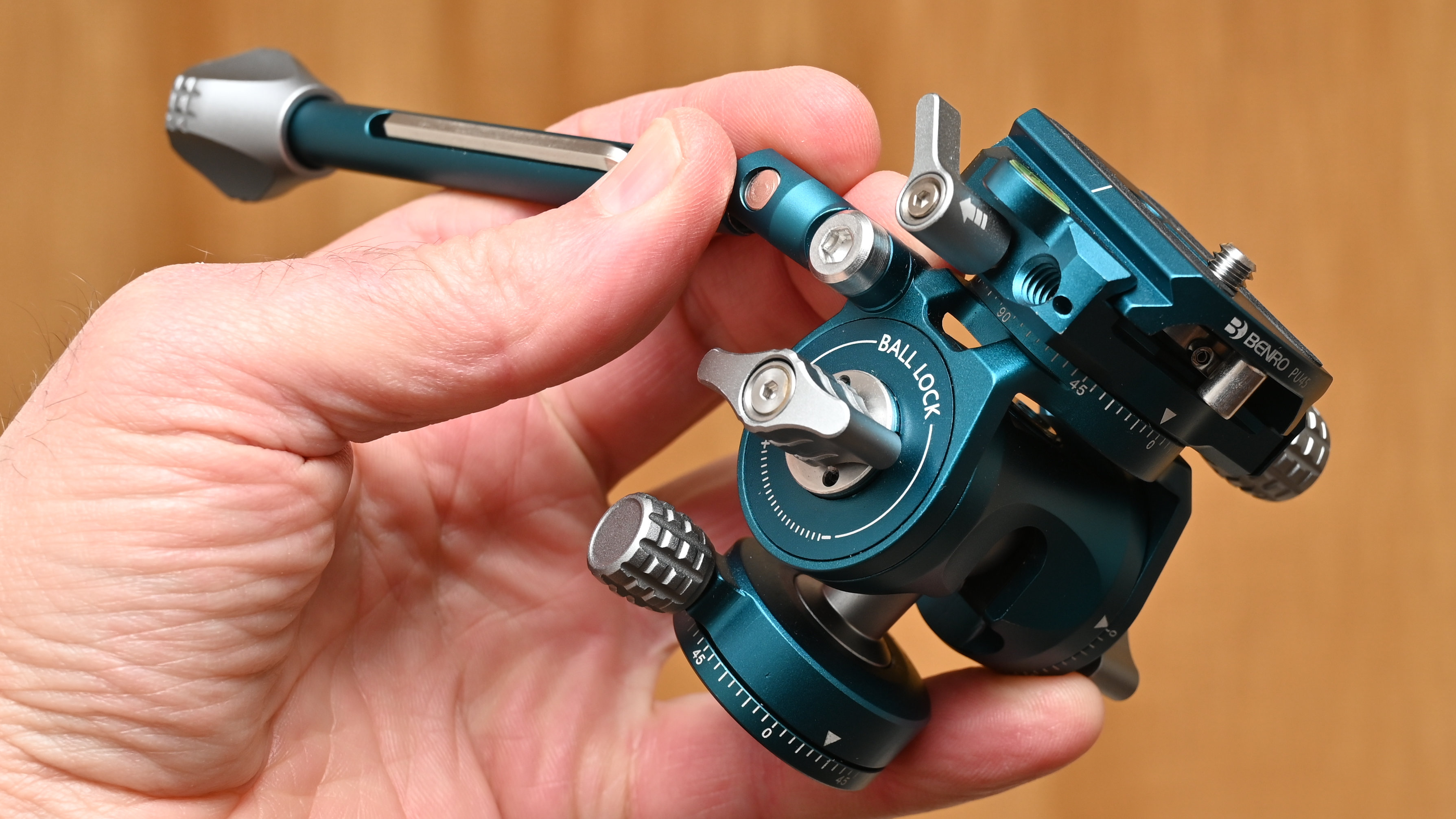
Benro might not be the very most famous tripod manufacturer in the world but it’s earned a very solid reputation since it launched in China, back in 1996. I’ve recently been very impressed with different versions of the Benro Cyanbird Hybrid and Benro Carbon FS30 travel tripod kits. This FS20PRO head is also available as part of a complete Cyanbird kit, being perfectly matched to the legs. But it’s also available on its own, vying for your attention if you already have a perfectly good set of tripod legs and just need a clever head. In essence, it sets out to be one of the best ball heads, as well as being one of the best pan and tilt heads.

Benro FS20PRO: Specifications
Benro FS20PRO: Price
The Benro FS20PRO head costs $85 / £100 / AU$215. I reckon that’s a bit of a bargain considering its versatility that takes both stills photography and videography in its stride. And if you want the complete kit, with a color-matched set of Cyanbird carbon fiber tripod legs, that’ll set you back $280 / £315 / AU$600. The kit actually undercuts the price of the Benro Cyanbird Carbon + FS30 head, which has an arguably less sophisticated head, costing $300 / £300 / AU$700. Unsurprisingly, however, it’s rather pricier than the Benro Cyanbird ‘hybrid’ kit that has carbon fiber outer leg sections and aluminum inners, at $190 / £235 / AU$599.
Benro FS20PRO: Design & Handling
The FS20PRO looks quite a miracle of modern, miniaturized mechanics. Let’s start at the bottom and work our way up. The mounting disk for attaching it to a tripod has a 35mm diameter. That’s a perfect fit for Benro’s Cyanbird tripod legs and should also suit a wide range of travel tripods from other manufacturers. The payload rating is 4.5kg / 10lb, which is a good match for all but the heaviest-duty travel tripods. Fixing the head to a tripod is via a standard 3/8” thread socket, and a 3/8” to ¼” adapter is supplied, for use with tripod legs that have a thinner attachment screw.
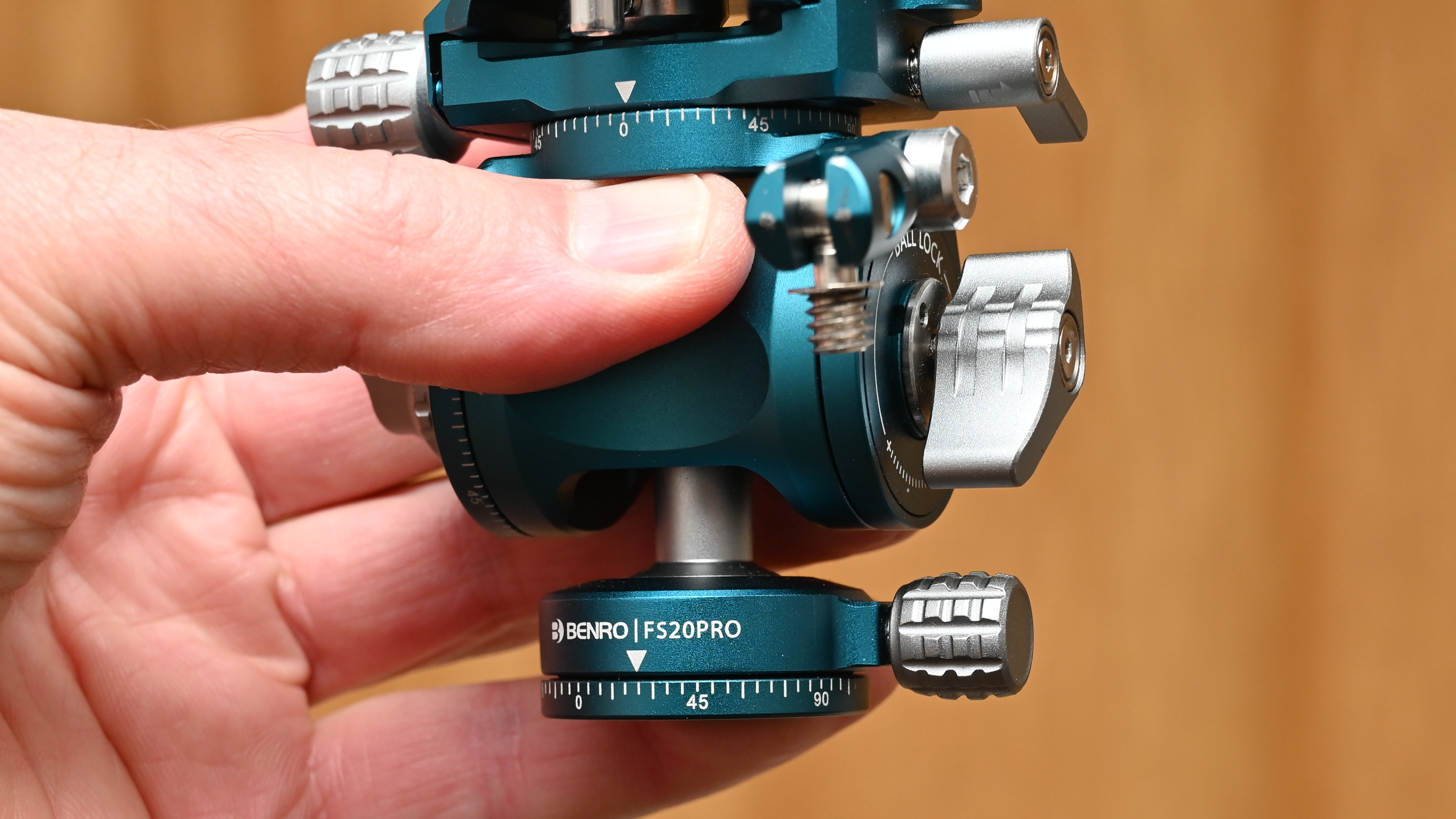
At the base of the head, there’s the lower panning mechanism which comes with a locking knob and a calibrated scale encompassing a full 360 degrees. For smooth panning when shooting video, this is the preferred mechanism (I’ll come to the top panning section in a bit). Just above this is a threaded arm for attaching the panning handle, which simply screws on. The arm is fully removable if you wish, and you can unscrew its locking screw using the supplied hex key, which slots into the handle and is retained by magnets. The outer end of the panning handle also has three ¼” threaded sockets for attaching accessories. You can also use these with bendable short legs to convert the head into a tabletop tripod.
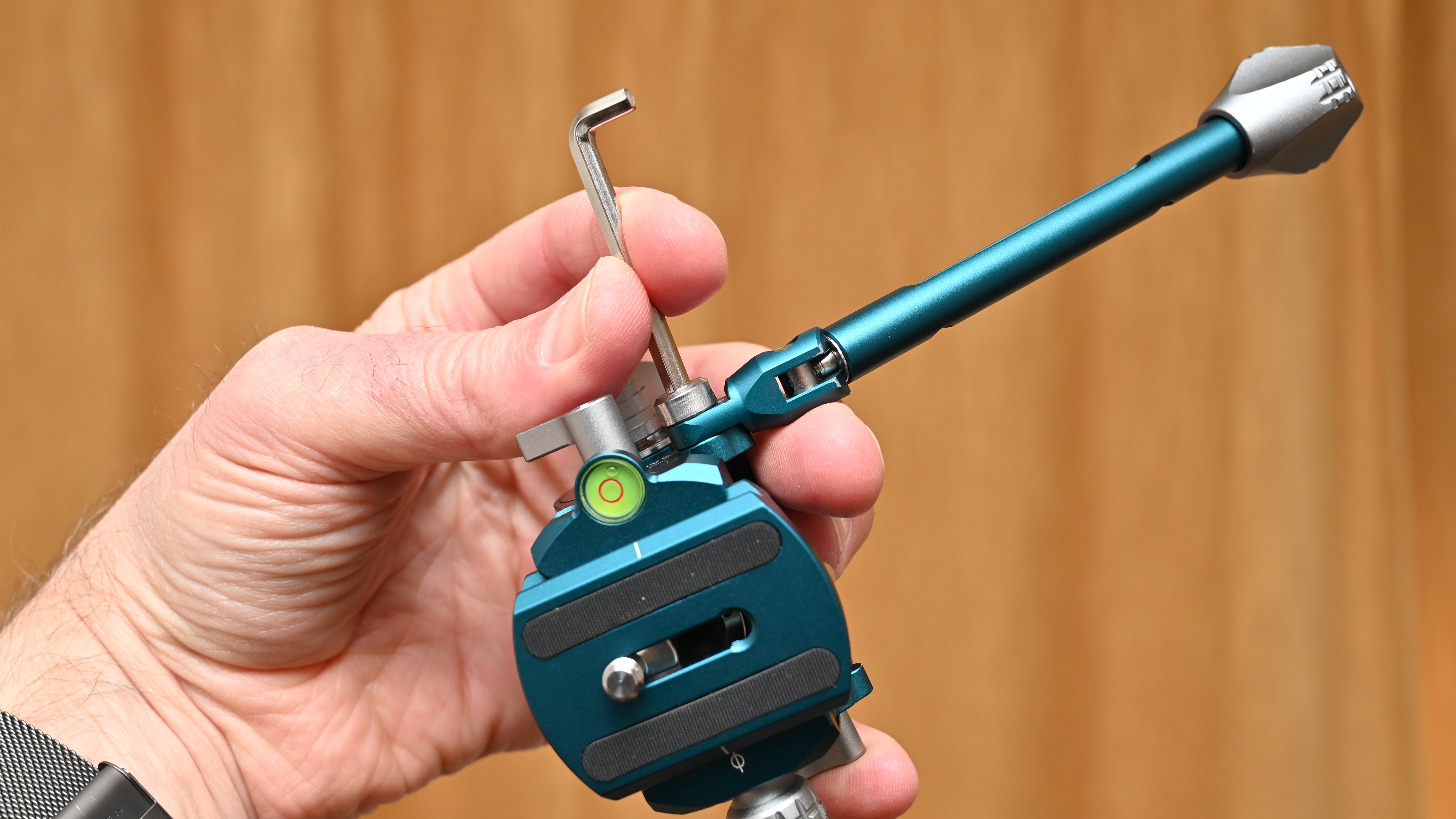
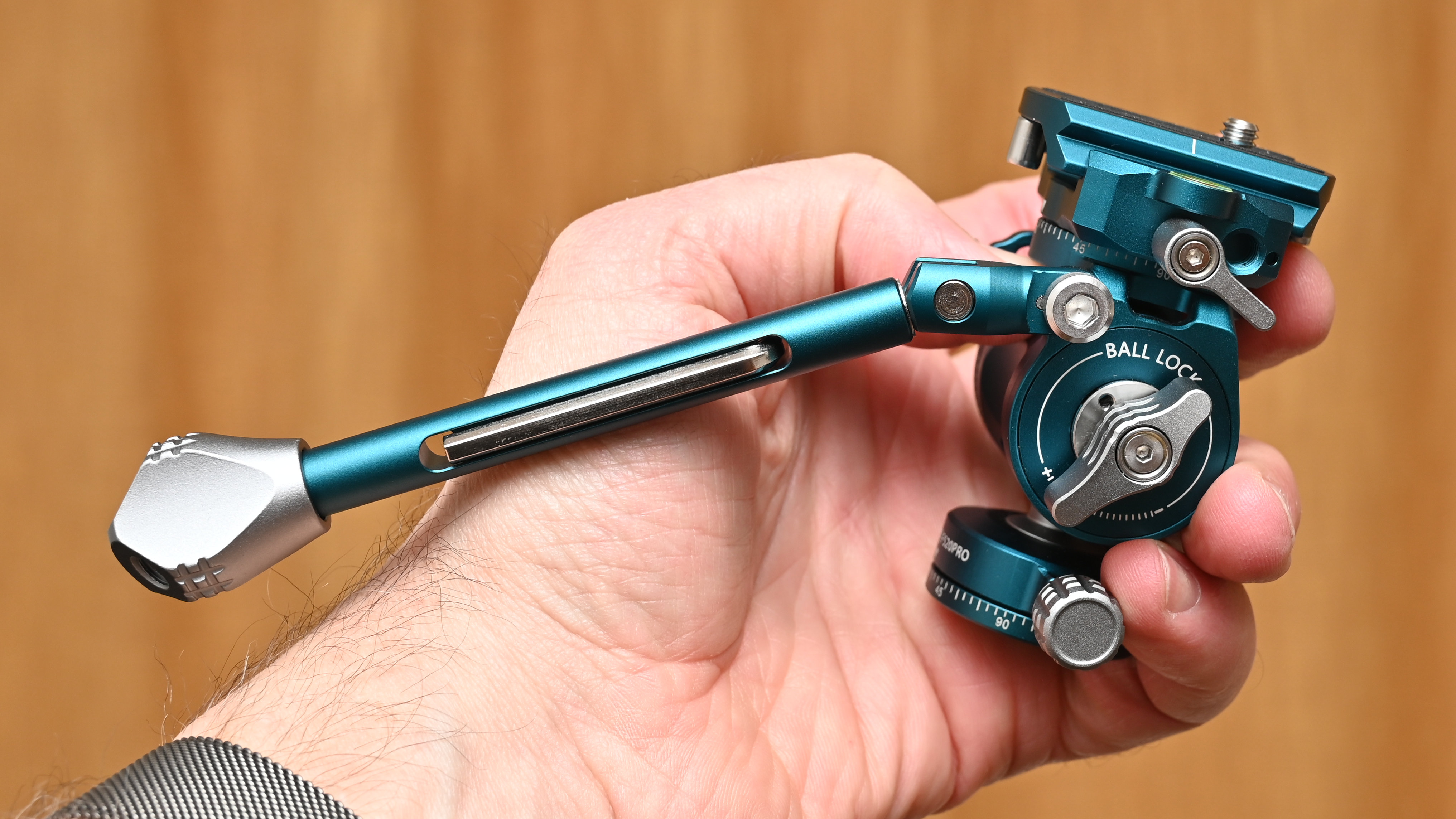
To the right and left of the main body of the head are two further locking knobs. The one on the right is the ball lock. Loosen this and the usual full range of movement is available, with quick simplicity. There’s no independent friction adjuster but there are plenty of other controls to play with, all vying for precious space in the compact head. On the left hand side is the tilt lock. Loosen this and the camera platform of the head can be tilted backwards and forwards, while the ball joint remains locked in place. Loosen the tilt and lower panning locks and you can pan and tilt the head using the panning handle, in an entirely natural and intuitive way.
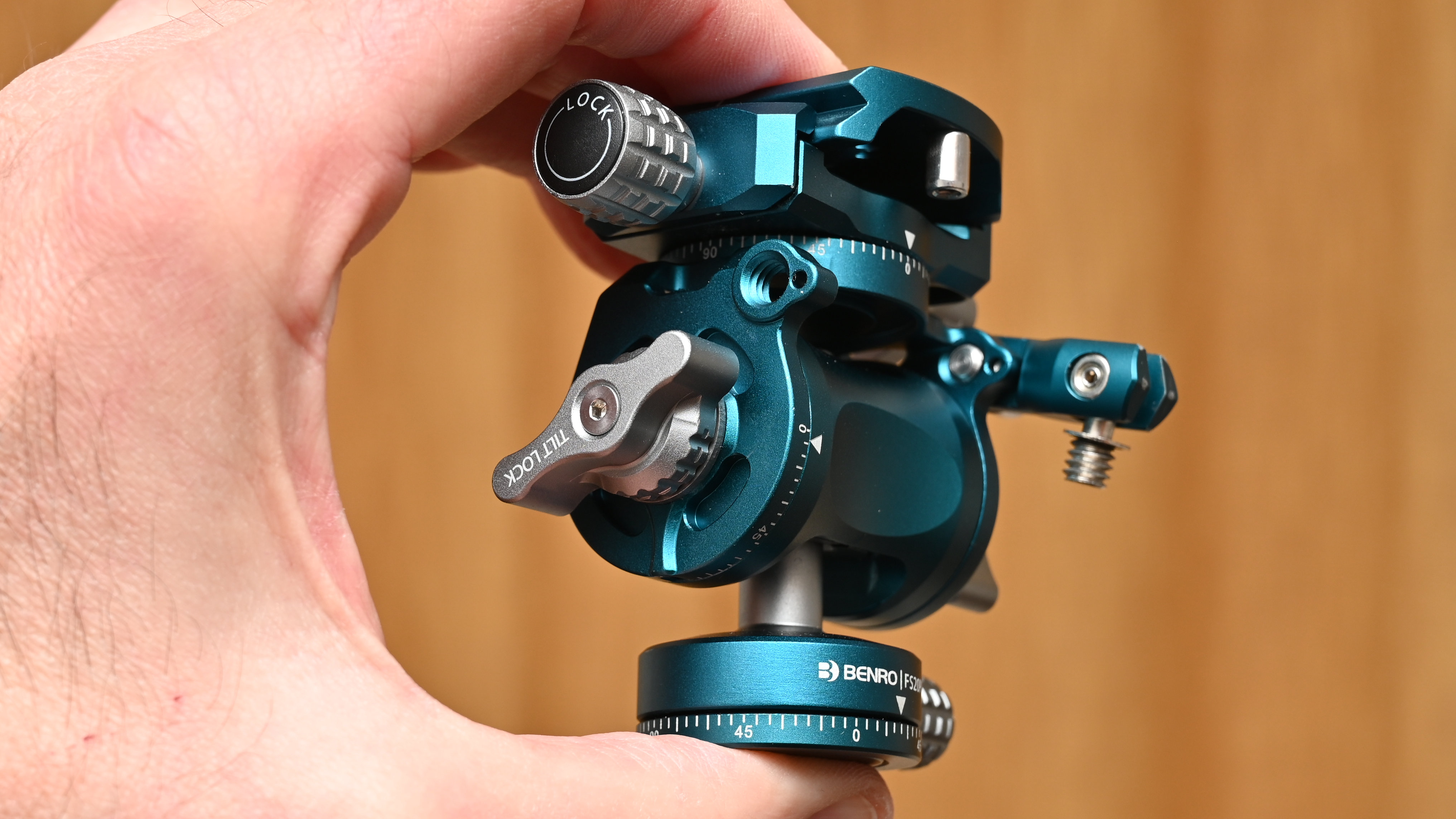
As if all this wasn’t enough to keep you fully occupied, there’s a secondary panning lock at the top of the head. Why an extra one? Well, if you customarily pan for video or take sequences of stills for stitching into a panoramic image, you’ll know that things can go horribly wrong if the legs of your tripod aren’t perfectly leveled. That can be a time-consuming chore. If you adjust the angle of the head to compensate for a non-leveled set of legs, everything goes on the skew as soon as you start panning. Using the uppermost panning plate, which is at the top instead of the base of the head, the camera remains level during panning, even if the legs aren’t leveled. Again, there’s a calibrated scale through a full 360 degrees. The only downside, which is only to be expected, is that you can’t use the panning handle operate the top panning section.
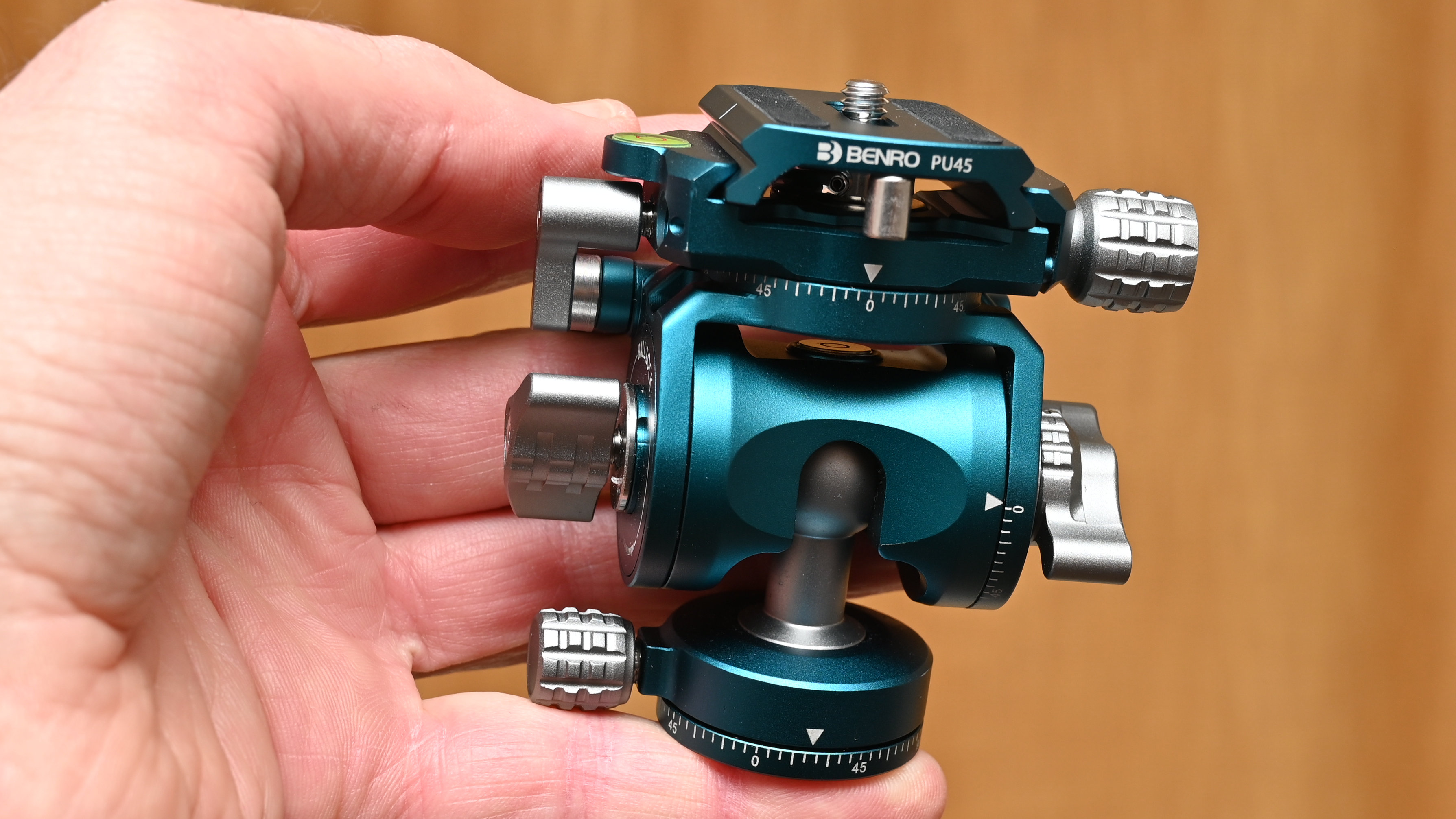
To help with leveling, there’s a bubble level on the side of the top plate of the camera platform. On the opposite side of the upper panning lock, there’s a locking knob for the quick-release plate. This has a standard Arca Swiss profile and removeable safety pins front and rear of the underside. The fastening screw for attaching a camera has a slot for using a flat blade or coin, a hex key or the featured D-ring, catering to all preferences.
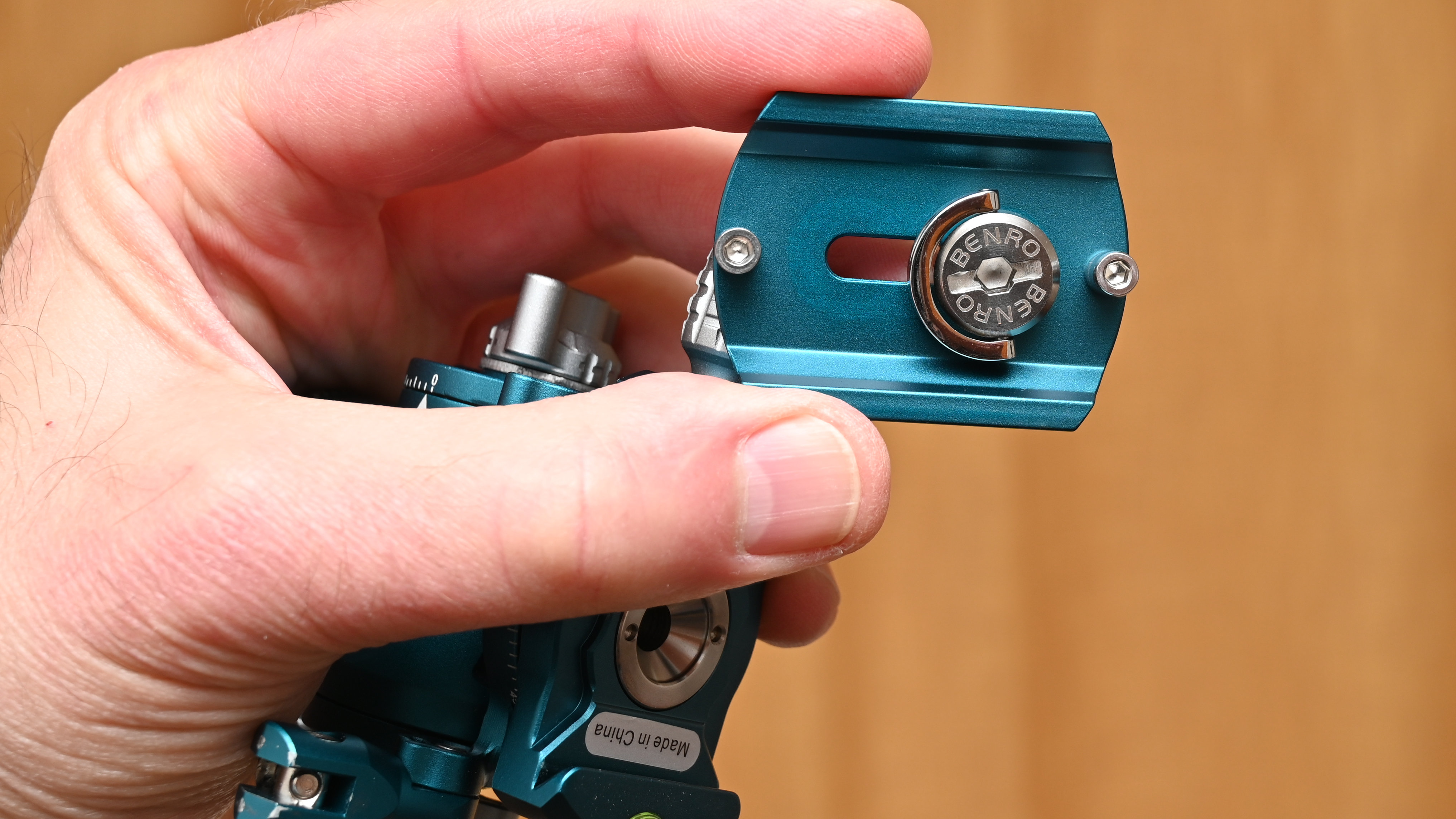
Benro FS20PRO: Performance
For such a compact and lightweight head, measuring just 78x50x82mm / 3.1x2.0x3.2" and weighing in at 0.31kg / 0.68lb, the FS20PRO feels remarkably robust. It’s beautifully engineered, which translates into excellent performance. All of the control knobs work with smooth precision and the pan and tilt functions have a nice fluid feel to them, ideal for shooting video. Similarly, the ball and socket mechanism operates freely but locks up nice and solid when the knob is tightened.

It's hard to criticize any aspect of handling and performance but with so many controls built into such a small and travel-friendly head, they do feel a little cramped. To help avoid them tripping over each other, the locking levers for the ball and upper panning mechanism can be pulled out on spring-loaded shafts and repositioned in the ideal orientation.
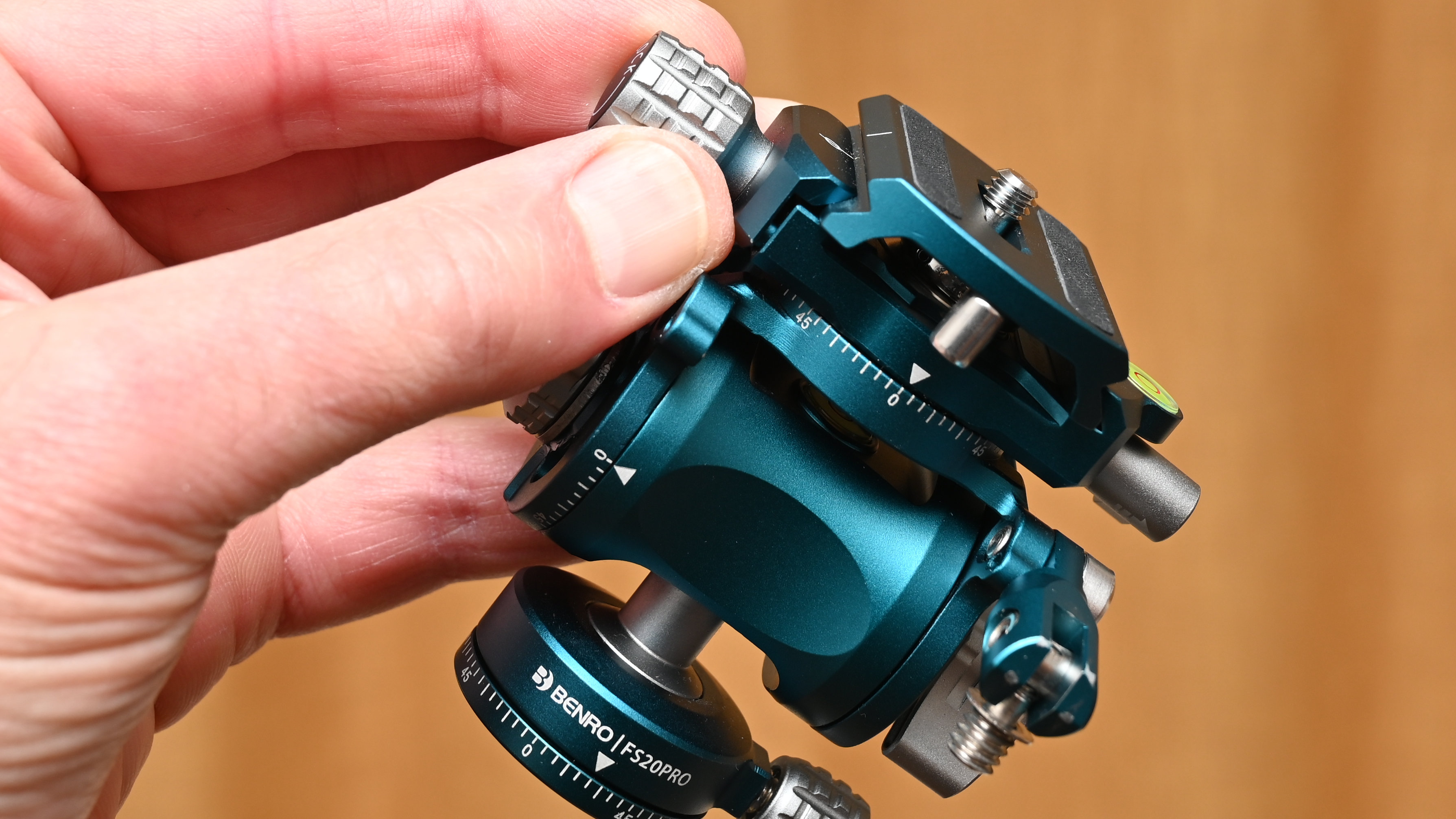
Benro FS20PRO: Verdict
Although compact and lightweight, the Benro FS20PRO is positively bursting with features. It’s a worthy addition to pretty much any travel tripod and bang on for the range of Benro Cyanbird legs. I really like the combination of ball head action with video-friendly pan and tilt capabilities, plus an extra panning mechanism up above, which is kind of like the cherry on the top. All in all, it’s a really clever little head and very good value at the price.
